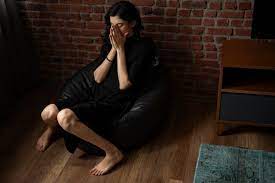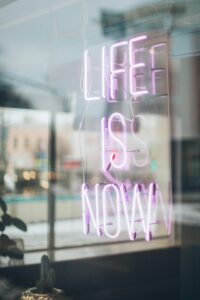FASHION, HISTORY, TRENDS, EVALUATION, EVOLUTION
Fashion History and Modern Trends
1. Since the dawn of civilization, fashion has played a significant role in shaping human culture. Our appearance communicates our values, place in society, and character. Fashion has changed and developed over time in response to shifting social, cultural, and economic variables.
2. This article will examine the development of fashion throughout history and how it has been compared to current trends.
Ancient Egyptians used linen to make airy, comfy clothing to tolerate the hot temperature, which is where the earliest signs of fashion can be found.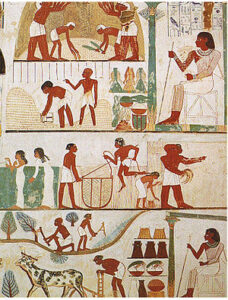
Clothing served as a symbol of social position and wealth in ancient Greece, and fashion was inspired by both art and philosophy.
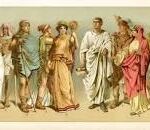
The arts had an impact on fashion during the Renaissance, which saw an increase in intricate and elegant attire.
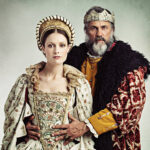
In the twentieth century with the growth of ready-to-wear apparel and the fashion business, fashion became more widely available and more reasonably priced for the general public.
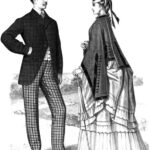
The flapper style, which featured lower hemlines, looser clothing, and a more androgynous appearance, emerged in the 1920s.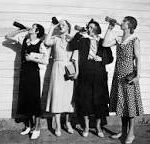
The 1950s emphasised feminine curves with long skirts and hourglass silhouettes while bringing back more traditional gender norms. 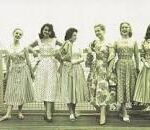
With the development of youth culture and countercultural groups, the 1960s saw a revolution in fashion.
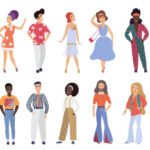
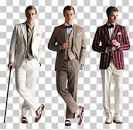
Bold colours, large apparel, and a concentration on conspicuous consumption were characteristics of the 1980s.
A return to minimalism and an emphasis on ease of use and practicality were seen in the 1990s.
With a focus on personal expression and a fusion of old and modern styles, fashion expanded in diversity throughout the 2000s.
Currently, fashion is more inclusive and diverse than ever. Fashion has become more accessible and democratic as a result of the growth of social media and online buying. More options are available to consumers than ever before, and fashion companies must quickly adjust to shifting fashion preferences. Examining fashion trends should take into account not only their aesthetic value but also their social and environmental implications. Since consumers have become more aware of the negative social and environmental effects of fast fashion, sustainable and ethical fashion has grown in importance.
The history of fashion provides evidence of how human culture and civilization are dynamic and ever-changing. As social, cultural, and economic conditions changed over time, so did fashion. Fashion now is more inclusive and diverse than ever before, and More options than ever are available to consumers. Thought should be given to how our clothing choices will affect society and the environment as fashion advances.
3. Seven Reasons Why People Wear Apparel There are several reasons we wear clothing, including the following: • Protection: Clothing shields the wearer from environmental hazards like rain, wind, and sunlight. It can also shield us from harm, such as when we play sports or work in construction while wearing safety equipment.
- Modesty: Areas of the body deemed private or intimate can be covered with clothing.
- Identification: A person’s occupation, social standing, or cultural heritage can be determined by their clothing.
- Expression: People can express themselves through their clothing, showcasing their unique personalities, sense of fashion, and creative abilities.
- Fashion: Clothing can be worn to show off a specific sense of style or to keep up with current trends in fashion. • Custom: Clothes can be worn to respect culture and tradition, such as donning a wedding gown or religious attire. • Convenience: garments can be worn for convenience, such as wearing loose-fitting garments on a hot day or warm clothing in a chilly environment.
4. The Four Clothing Categories
• Everyday wear: This refers to the clothing used for casual, everyday activities like doing errands, attending school, or going to the office. • Work wear: This refers to attire made especially for use in the workplace or in formal contexts, such as uniforms or business suits.
• Formal wear: This category covers attire for galas, black-tie events, weddings, and other formal gatherings.
• Athletic wear: This category contains clothes made for sports and exercise, such as yoga pants or running shorts.
5. The Five C‘s of Style
The elements of fashion include:
- Cut: How a garment is fashioned, cut, and tailored to fit the body.
- Colour:The shades and tones utilised in a clothing or item, which can impact how fashionable or fashionable it seems overall.
- Clarity:The design of a garment’s simplicity and clarity, can help it stand out and make a statement.
- Character: A garment’s personality and uniqueness, which can be impacted by the fabrics, patterns, and design elements employed. Care: The upkeep and maintenance necessary to maintain a garment’s finest appearance over time.
6. Sources Which Serve as the Foundation for Fashion
- Fashion designers: By producing looks that are worn by famous people and displayed on runways, fashion designers frequently serve as the catalyst for new fashion trends.
- Influencers: By sharing their attire and personal style with their followers on social media, influencers can also influence fashion trends.
- Shops: Through their marketing initiatives and product selections, clothing shops frequently launch new styles and trends.
- Media: By presenting new styles and featuring celebrities wearing them, fashion magazines, blogs, and TV shows can also have an impact on fashion trends.
- Street Style: Fashion trends can also be inspired by regular people dressing in fresh, original ways on the streets, which other people can imitate. Fashion and attire can be influenced by a wide range of factors and have numerous functions. Clothing has a significant impact on our lives and how we exhibit ourselves to the outside world, serving a variety of purposes from identification and protection to self-expression and fashion trends.
7. Who Decides What is in Style?
Today’s fashion trends come from a wide variety of sources, including runways, textile producers, social media, music, and more. Designers predict their emergence and disappearance, as do experts from the outside like stylists and trend analysts. Fashion designers, fashion houses, fashion editors, fashion buyers, celebrities, influencers, and trend forecasters are just a few of the entities that shape the industry. With their runway collections, fashion houses and designers frequently establish the original trend, which is later embraced and modified by others. By choosing which designers and collections to highlight in fashion magazines and stores, fashion editors and buyers also play a significant influence in establishing fashion trends. Since they frequently have sizable fan bases and have a big influence on what their followers wear, celebrities and influencers also have a big influence on fashion trends. The establishment of fashion trends is also heavily influenced by trend forecasters, who work for businesses or organisations that specialise in making such predictions. To make future style and colour predictions, they look at consumer behaviour, societal trends, and economic variables. Most fashion trends have a predictable life cycle that begins with the introduction of a new trend, is followed by a time of popularity, and then finally fades away. Each stage’s duration can change based on the trend and other elements. In short, a diverse group of individuals and organisations, including designers, editors, buyers, celebrities, influencers, and trend forecasters, are responsible for establishing fashion trends. Individuals can stay current with trends and make wise fashion decisions by being aware of the various factors that affect fashion trends.
8. Dress Code and Fashion’s Importance in Human Life
The potential of fashion to represent our personality, social status, culture, and beliefs make it a vital part of human life. In addition to being a utilitarian requirement, clothing serves as a medium for personal expression and social interaction. Fashion can influence our self-confidence and self-esteem while also serving as a means of self-expression, creativity, and individuality. Fashion is important on an economic and societal level in addition to its personal value. The global economy benefits greatly from the millions of jobs provided by the fashion sector. Additionally, fashion has the ability to forge bonds between individuals, foster a sense of belonging, and celebrate diversity. The dress code, in the term “fashion” refers to a collection of rules or regulations that specify what kind of attire is acceptable for a given situation, event, or occasion. The appropriate outfit might range from professional and business clothes to casual and streetwear, depending on the situation. Additionally, dress codes can convey social expectations, religious convictions, and cultural norms. In some situations, dress standards can be beneficial since they make it clear what is expected and appropriate. Additionally, they can ensure that everyone is dressed appropriately for the occasion and promote professionalism and respect in the workplace. No doubt fashion has a big impact on people’s lives since it reflects their personality, social standing, and culture. It also helps the world economy and brings people together. We can navigate social situations and make sure we are dressed appropriately for the situation by following fashion norms. In the end, dressing up provides benefits for both expressing oneself and socialising. Some people are passionate about fashion. For many, fashion is a form of self expression and creativity. However, fashion means different things to different people. In addition to serving a utilitarian purpose, clothing also serves as a window into our character, state of mind, and sense of fashion. People can display their uniqueness, communicate their feelings, and share their ideas with the world through fashion. Fashion is a passion for certain people, not merely a pastime or interest. They are captivated by fashion’s beauty and originality, and they discover delight in discovering fresh looks, colours, and trends. Fashion connoisseurs frequently invest time in reading about the origins and development of fashion as well as keeping up with the latest fashions. In addition to being a means of expression and identity exploration, fashion can also serve as an escape. It may be a method to defy social norms and forge a distinctive sense of self. For enthusiastic individuals, fashion can be a career option in addition to a means of personal expression. Numerous career opportunities are available in the fashion industry, including those in design, production, marketing, and sales. Those who are passionate about fashion can make a successful career out of their pastime. Fashion connotes various ideas. It signifies different things to different people, but for many, it is a vehicle for individuality, creativity, and self-expression. Some people’s passions bring them happiness, fulfilment, and a sense of meaning. Fashion has the ability to motivate, unite, and influence people’s lives whether it is a hobby or a career route.
To be Continued

